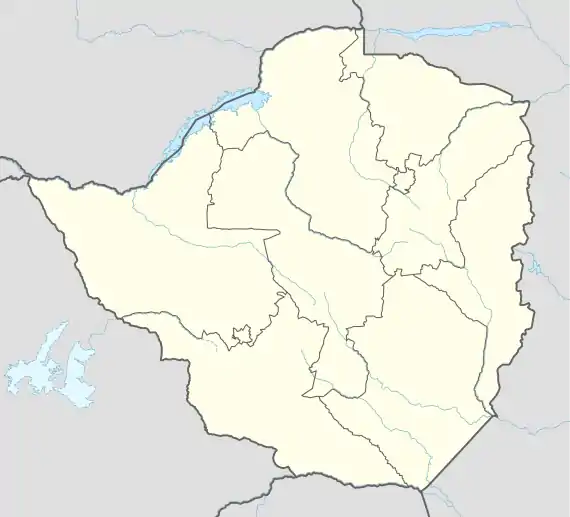| Location | |
|---|---|
 Sandawana Mines | |
| Province | Midlands |
| Country | Zimbabwe |
| Coordinates | 20°55′0″S 29°55′59″E / 20.91667°S 29.93306°E |
| Production | |
| Products | emeralds, lithium |
| History | |
| Opened | 1958 |
| Owner | |
| Company | Rio Tinto Zinc 1958–1993 Sandawana Mines Ltd. 1993–2019 Kuvimba Mining House 2019– |
The Sandawana Mines are a mining complex in Mberengwa District, Midlands Province of Zimbabwe, primarily known for its emeralds. The mines are sixty-five kilometers south of the town of Mberengwa.[1]
With the growth in the use of lithium batteries, lithium became a major product from the Sandawana mines.[2]
History
Emeralds were first discovered there in 1956, at what is now the Vulcan mine site, and the following year at the Zeus mine site. Production began in 1958,[3] and in 1959 the properties were sold to a Rio Tinto subsidiary Rio Tinto Zinc (RTZ).[1] The mines were first worked by filling a wheelbarrow with the gem containing soil and then washing away the earth,[4] but were replaced by modern placer techniques.
In 1993 Rio Tinto sold the mines to a newly formed company, Sandawana Mines (Pvt.) Ltd., where the Zimbabwean government held a significant share.[1] The mines were closed seven years later due to the drop in demand for emeralds.[5] But interest in the properties resumed as the price of lithium soared. In 2019, Kuvimba Mining House (KMH), which is 65% owned by the Zimbabwe government, took over the asset.[2]
Illegal mining takes place at the Sandawana mines due to lax or bribed security.[2]
Geology
The Mweza greenstone belt consists of a series of intensely deformed and moderately metamorphosed ultramafic-to-mafic volcanic rocks and metamorphosed sedimentary rocks.[6] Intruded into the greenstone are granitic pegmatites containing rare earth minerals such as spodumene. These pegmatite were intruded just prior to and/or during a main deformation event at 2.6 Ga.(2.6 billion years ago).[7] Subsequently, along the cracks between the pegmatites and the greenstone, a hydrothermal solution complex was injected containing large amounts of sodium, as well as lithium, fluorine, beryllium, phosphorus and chromium.[8] This solution reacted with the minerals of both the granite pegmatite and the greenstone to produce a variety of uncommon minerals, including emeralds (beryl).[8]
Notes and references
- 1 2 3 Zwaan, Johannes Cornelis (Hanco); Kanis, Jan; Petsch, Eckehard J. (1997). "Update on Emeralds from the Sandawana Mines Zimbabwe". Gems & Gemology. Gemological Institute of America. 33 (2): 80–100.
- 1 2 3 "Demystifying Sandawana Mine". Harare, Zimbabwe: Centre for Natural Resource Governance (CNRG). Archived from the original on 8 November 2023.
- ↑ Gübelin, Eduard J. (1958). "Emeralds from Sandawana". The Journal of Gemmology. 6 (8): 340–354.
- ↑ Böhmke, F. C. (1982). "Emeralds at Sandawana in Gemstones, Report of the Sixth Annual Commodity Meeting, Institution of Mining and Metallurgy (IMM)". Transactions of the Institution of Mining and Metallurgy. 91: A110–A122.
- ↑ Kairiza, Tinashe; Nyoni, Mthandazo (21 September 2023). "Kuvimba sits on 820 000 tonnes of lithium stockpiles". NewsDay. Harare, Zimbabwe.
- ↑ Zizhou, Peter T. (1994). "A preliminary report on the geology of the Mweza Greenstone Belt, Mberengwa". Annals of the Zimbabwe Geological Survey. 18: 7–11.
- ↑ Zwaan, Johannes Cornelis (Hanco) (2006). "The Sandawana Model of Emerald Formation" (PDF). Gems & Gemology. 42 (3): 111.
- 1 2 Zwaan, Johannes Cornelis (Hanco) (2006). "Gemmology, geology and origin of the Sandawana emerald deposits, Zimbabwe" (PDF). Scripta Geologica. 131: 1–212. Archived (PDF) from the original on 8 March 2022.